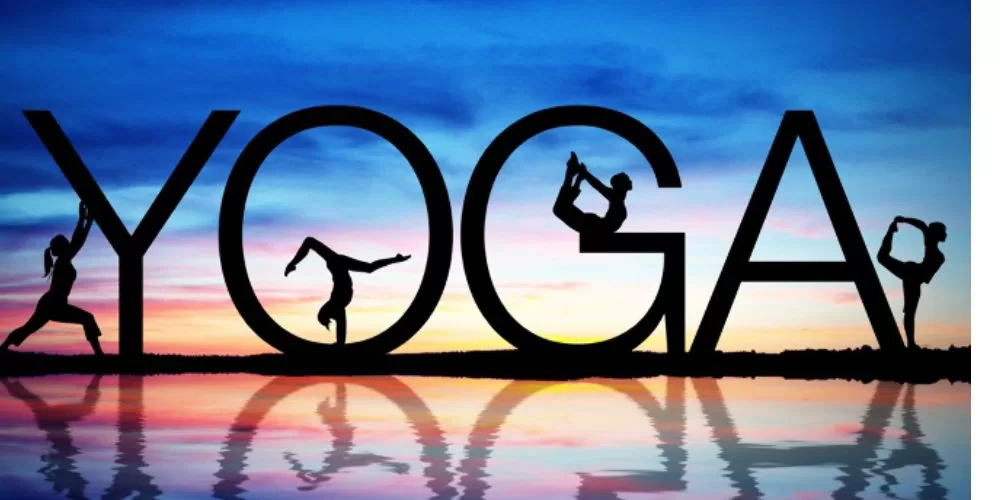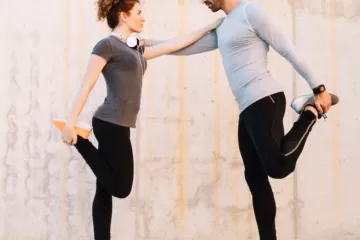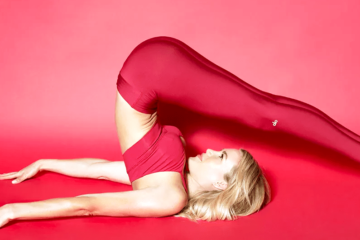Sport Yoga combines the principles of yoga with athletic training, aiming to enhance strength, flexibility, balance, mental focus, and overall sports performance. In this blog, we will explore the concept of Sport Yoga and delve into practical tips on how to incorporate yoga into your sports conditioning routine. Discover how this holistic approach can help athletes of all levels improve their physical abilities, prevent injuries, and optimize their athletic potential.
What is Sport Yoga?
Sport Yoga refers to the practice of incorporating yoga principles, techniques, and poses into athletic training and sports conditioning. It combines the physical and mental benefits of yoga with the specific demands of sports performance. Sport Yoga focuses on enhancing strength, flexibility, balance, breath control, and mental focus to improve overall athletic performance.
Sport Yoga differs from traditional yoga practices in that it tailors yoga techniques to meet the specific needs of athletes and their respective sports. It may include dynamic asanas (poses) to improve strength and flexibility, targeted breathing exercises to enhance endurance and control, and mindfulness practices to sharpen mental focus and visualization. Sport Yoga can be adapted for various sports, including but not limited to, team sports, individual sports, and endurance activities.
By incorporating Sport Yoga into their training routines, athletes can experience improved physical fitness, reduced risk of injuries, increased body awareness, enhanced mental resilience, and better overall performance on and off the field. It offers a holistic approach to sports conditioning, combining the physical and mental aspects to optimize athletic abilities.
Understanding the Concept and Benefits
Sport Yoga is a practice that combines the ancient principles of yoga with the specific needs of athletes and sports conditioning. It involves adapting yoga techniques and poses to improve physical strength, flexibility, balance, mental focus, and overall athletic performance.
One of the key concepts of Sport Yoga is the integration of mindfulness and breath control. Athletes learn to synchronize their breath with movement, promoting better oxygenation, relaxation, and mental clarity during training and competition. This mindful approach helps athletes stay present, focused, and in tune with their bodies, leading to improved performance and reduced risk of injuries.
The benefits of Sport Yoga are numerous. It enhances flexibility, which is crucial for preventing injuries and optimizing athletic movements. Increased strength and stability gained through yoga poses can improve overall power and efficiency in sports activities. Sport Yoga also promotes better body awareness, balance, and coordination, enabling athletes to move with precision and control.
Yoga Asanas for Strength and Flexibility Enhancement
Yoga offers a variety of asanas (poses) that can effectively enhance both strength and flexibility. Incorporating these poses into your practice can help improve muscle tone, increase range of motion, and build functional strength. Here are some key yoga asanas that target strength and flexibility:
Downward Facing Dog (Adho Mukha Svanasana): This pose strengthens the upper body, including the arms, shoulders, and core, while stretching the hamstrings and calves.
Warrior II (Virabhadrasana II): Warrior II pose engages the legs, hips, and core, building lower body strength and enhancing hip flexibility.
Plank Pose (Phalakasana): Plank pose is a great full-body exercise that strengthens the arms, shoulders, core, and legs while improving overall stability.
Triangle Pose (Trikonasana): Triangle pose stretches and strengthens the legs, hips, and side body, promoting flexibility and stability in those areas.
Bridge Pose (Setu Bandhasana): Bridge pose strengthens the glutes, hamstrings, and lower back, while opening the chest and shoulders.
Chair Pose (Utkatasana): Chair pose targets the quadriceps, glutes, and core, improving lower body strength and stability.
Cobra Pose (Bhujangasana): Cobra pose strengthens the back muscles, arms, and shoulders, while increasing flexibility in the spine.
Standing Forward Fold (Uttanasana): This pose stretches the hamstrings, calves, and lower back, promoting flexibility in the posterior chain.
Boat Pose (Navasana): Boat pose engages the core muscles, improving abdominal strength and balance.
Extended Triangle Pose (Utthita Trikonasana): Extended Triangle pose strengthens the legs, stretches the sides of the body, and increases hip mobility.
Remember to practice these asanas with proper alignment and gradually increase the duration and intensity as your strength and flexibility improve. It’s essential to listen to your body and modify the poses as needed. Consistency and regular practice will yield the best results in enhancing both strength and flexibility through yoga asanas.
Breathing Techniques for Endurance and Control
One effective technique is deep belly breathing, where you inhale deeply through your nose, expanding your belly, and exhale fully through your mouth. This helps maximize oxygen intake and release carbon dioxide, improving stamina.
Another technique is rhythmic breathing, syncing your breath with movements. For example, inhale during the preparatory phase of an exercise and exhale during the exertion phase. This helps maintain a steady flow of oxygen, optimizing performance.
By incorporating these breathing techniques into your workouts or sports activities, you can enhance endurance, reduce fatigue, and stay focused throughout your performance.
Mindfulness and Visualization: Mental Conditioning through Yoga
Mindfulness and visualization are powerful mental conditioning techniques utilized in yoga to enhance performance and focus.
Mindfulness involves being fully present in the current moment, paying attention to sensations, thoughts, and emotions without judgment. This cultivates a heightened state of awareness, enabling athletes to stay focused on their movements and surroundings during sports activities.
Visualization, on the other hand, is a technique where athletes mentally imagine themselves successfully performing specific skills or achieving their goals. By vividly visualizing their desired outcomes, athletes stimulate neural pathways and enhance muscle memory, leading to improved performance.
When combined, mindfulness and visualization create a powerful mental state that helps athletes maintain composure, reduce distractions, and optimize their performance. By training the mind to stay present and envision success, athletes can overcome challenges, manage stress, and perform at their best.
Creating a Yoga Routine for Sports Conditioning
Designing a yoga routine tailored to sports conditioning can effectively complement an athlete’s training regimen. Here are some steps to create a yoga routine specifically for enhancing athletic performance:
Identify specific needs: Assess the demands of your sport and identify areas that could benefit from yoga. For example, if you’re a runner, you might focus on flexibility, leg strength, and hip mobility.
Warm-up: Begin with a dynamic warm-up sequence to increase blood flow, warm up muscles, and prepare the body for movement. This can include gentle stretches, joint mobilization exercises, and rhythmic breathing.
Asana selection: Choose yoga asanas that target the areas you identified earlier. Include poses that enhance strength, flexibility, balance, and core stability relevant to your sport. Ensure a balanced approach, working on both the dominant and non-dominant sides of the body.
Sequencing: Organize the asanas in a logical sequence, flowing smoothly from one pose to the next. Start with less challenging poses and progressively move towards more demanding ones. Include variations or modifications as needed.
Focus on breath: Emphasize coordinated breathing throughout the routine. Inhale during opening or lengthening movements and exhale during contraction or release movements. Encourage deep, diaphragmatic breathing to oxygenate the body and promote relaxation.
Core integration: Integrate poses that engage and strengthen the core muscles, as a strong core is fundamental for stability and power in most sports.
Cooling down: End the routine with a gentle cool-down, including relaxation poses and stretches that target the muscles used during the session. This helps reduce muscle tension, promote recovery, and restore the body to a balanced state.
Regular practice: Consistency is key. Aim for regular yoga sessions, ideally 2-3 times a week, to reap the benefits and see improvements in your athletic performance over time.
Customizing Yoga for Different Sports and Athletes
Yoga can be customized to cater to the specific needs and requirements of different sports and athletes. Here are some considerations for customizing yoga practices:
Identify specific demands: Understand the physical demands of the sport and the areas of the body that are most engaged or prone to injury. For example, runners may benefit from hip and hamstring flexibility, while basketball players may focus on core strength and balance.
Targeted asanas: Select yoga poses that address the specific needs of the sport. For instance, swimmers may incorporate poses that strengthen the shoulders and improve breath control, while golfers may emphasize hip rotation and spinal mobility.
Timing and frequency: Determine the appropriate timing and frequency of yoga sessions based on the sport’s training schedule. Some athletes may benefit from incorporating shorter yoga routines as part of their warm-up or cooldown, while others may allocate separate sessions dedicated to yoga training.
Breath control techniques: Integrate specific pranayama (breathing) techniques that align with the sport’s demands. Athletes involved in endurance sports might focus on deep diaphragmatic breathing to enhance stamina, while those in high-intensity sports may benefit from breath control techniques that promote focus and relaxation.
Mental conditioning: Incorporate mindfulness and visualization techniques to enhance mental resilience and concentration during sports performance. Customized practices can help athletes stay present, manage stress, and visualize success in their specific sport.
Individualized modifications: Allow for modifications and variations in poses to accommodate individual athletes’ strengths, limitations, and body types. This ensures that the practice is accessible and effective for each athlete.
Progression and adaptation: As athletes develop their yoga practice, progressively introduce more challenging poses or variations to continue stimulating growth and improvement. Adapt the practice as athletes’ needs and goals evolve.
Consultation with experts: Seek guidance from qualified yoga instructors or sports trainers who have experience in customizing yoga for specific sports. They can provide valuable insights and design tailored programs that align with athletes’ needs.
By customizing yoga practices to suit different sports and athletes, individuals can enhance their physical abilities, reduce the risk of injuries, and improve their overall performance in their chosen sport.




